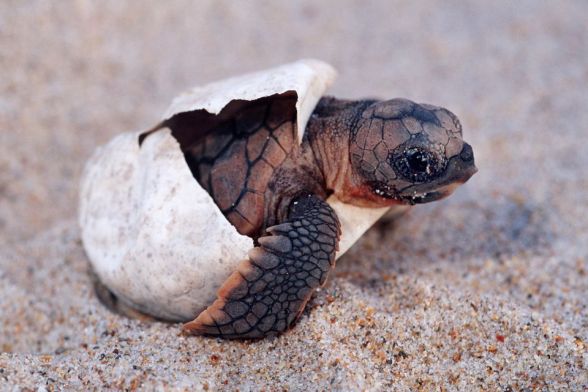
Marine animals have diverse life cycles depending on their species and ecological niche. Here are some common life cycle patterns observed in marine animals:
Oviparous
Producing young by means of eggs which are hatched after they have been laid by the parent.
Many marine animals lay eggs that hatch then undergo a series of developmental stages before transforming into adults. For example, sea turtles lay eggs on beaches, and the hatchlings make their way to the sea where they undergo a pelagic (open ocean) stage before maturing into adults.
Learn more about turtle life cycles with our free resources
Viviparous
Give birth to live young.
These species nourish their developing embryos internally and give birth to fully formed offspring. Marine mammals such as 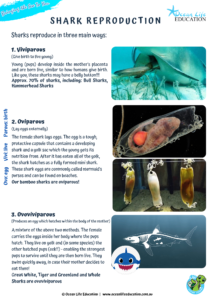 whales, dolphins, and seals exhibit this type of life cycle. The majority of sharks give birth to live young too.
whales, dolphins, and seals exhibit this type of life cycle. The majority of sharks give birth to live young too.
Learn more about vivaparous sharks and shark life cycles
Metamorphosis
Change of physical form, structure, or substance.
Some marine invertebrates, such as sea urchins, sea stars, and certain types of crustaceans, undergo metamorphosis. They start their lives as larvae, which go through a radical transformation to become adults.
Learn more about metamorphosis in sea urchins and sea stars
Complex Life Cycles
Many marine invertebrates, like corals and certain types of worms, have complex life cycles involving multiple stages and forms. They may have larval stages that float in the water column before settling on a substrate and metamorphosing into adults.
When coral polyps are sexually mature and their cells produce gametes (egg and/or sperm). The gametes are fertilized and produce a zygote which creates new cells and eventually forms a new coral polyp.
Planktonic Life
Numerous marine organisms, including various types of zooplankton and phytoplankton, have life cycles that occur entirely within the water column. These organisms often have free-floating larval stages that drift with ocean currents until they develop into adult forms.
Learn more about the open ocean habitat
Life cycles can vary greatly among different marine animal species. Factors such as reproduction, development, feeding habits, and habitat requirements influence the particular life cycle patterns observed in each species.
Example Life Cycles of marine animals
Turtles
Turtles have an intriguing life cycle that involves various stages of development and unique behaviors. Here is an overview of 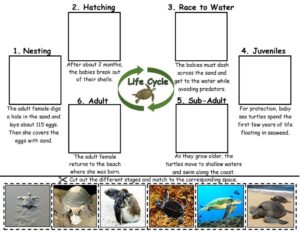 the life cycle of turtles:
the life cycle of turtles:
- Nesting and Egg Laying: Female turtles return to land, usually the same beach where they were born, to lay their eggs. They dig a hole in the sand using their hind flippers and deposit a clutch of eggs. The number of eggs in a clutch depends on the turtle species, ranging from a few to over a hundred. Once the eggs are laid, the female covers the nest with sand and returns to the sea.
- Incubation: The eggs are left buried in the warm sand to incubate. The temperature plays a vital role in determining the sex of the hatchlings. Warmer temperatures typically produce females, while cooler temperatures result in males. The incubation period can vary depending on the species and environmental conditions but generally ranges from several weeks to a few months.
- Hatching: When the time is right, the hatchlings begin to emerge from the nest. Using their egg tooth, a small pointed structure on their snout, they break open the eggshell. Hatchlings often emerge together in a group, which provides some protection against predators. It’s estimated that only 1 in 1,000 hatchlings will survive to adulthood.
- Journey to the Sea: Once they hatch, the tiny turtles instinctively crawl towards the brightest light, which is typically the reflection of the moon on the ocean’s surface. This natural instinct helps guide them towards the water. They may face various challenges on their way, such as avoiding predators and navigating obstacles.
- Pelagic Stage: After reaching the water, the hatchlings enter what is known as the pelagic (open ocean) stage. During this period, they spend much of their time floating and swimming in the open ocean, away from coastal areas. This stage can last for several years, depending on the turtle species.
- Growth and Development: As the hatchlings continue their journey through the pelagic stage, they undergo significant
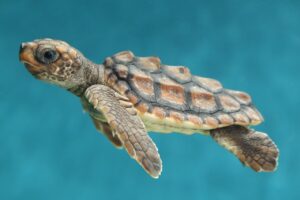 growth and development. They feed on a diet consisting mainly of plankton, small organisms, and jellyfish, depending on their species.
growth and development. They feed on a diet consisting mainly of plankton, small organisms, and jellyfish, depending on their species. - Juvenile Stage: After the pelagic stage, the turtles begin to transition into the juvenile stage. At this point, they leave the open ocean and migrate to coastal areas, such as estuaries and nearshore habitats such as coral reef. Here, they find shelter, food, and suitable environments to grow and mature.
- Maturation: The turtles continue to grow and mature over several years or even decades, depending on the species. The time it takes for turtles to reach sexual maturity varies widely among species, ranging from a few years to several decades.
- Reproduction: Once turtles reach sexual maturity, they return to the nesting grounds, often the same beach where they were born, to lay their own eggs. This completes the life cycle, as they repeat the process of nesting and egg laying.
The life cycle can vary among different turtle species. Each species has its own unique behaviors, migration patterns, and habitat preferences. Environmental factors, such as temperature, habitat availability, and human activities, can also influence the success and survival of turtle populations throughout their life cycle.
Teaching Marine Life Cycles
Our curriculum based Primary Programs give students the opportunity to observe live marine animals such as sea stars, sea urchins and sharks. This brings the learning experience to life.



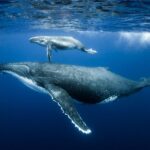 Life Cycle of Whales
Life Cycle of Whales